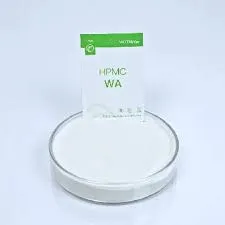
Nov . 06, 2024 08:38 Back to list
Exploring the Applications and Benefits of HPMC in Various Industries
The Use of HPMC in Pharmaceutical and Food Industries
Hydroxypropyl methylcellulose (HPMC) is a cellulose derivative widely utilized in both the pharmaceutical and food industries due to its unique properties. As a non-ionic polymer, HPMC offers a variety of functionalities that make it an ideal candidate for numerous applications. This article explores the significance of HPMC, its applications, and the benefits it brings to various sectors.
HPMC is primarily known for its role as a viscosity modifier, thickener, and stabilizer. In the pharmaceutical industry, it is extensively used as an excipient in drug formulations. One of the main advantages of HPMC is its ability to control the release of active pharmaceutical ingredients (APIs). This makes it highly valuable in the development of sustained-release and controlled-release formulations. By modulating the viscosity of the medium and the swelling characteristics of the polymer, HPMC can effectively prolong the release of medications, improving therapeutic outcomes for patients.
The Use of HPMC in Pharmaceutical and Food Industries
In the realm of the food industry, HPMC is valued for its thickening and emulsifying properties. It is commonly used in food products to improve texture and stability. For instance, HPMC is often found in gluten-free baked goods, where it helps mimic the texture that gluten provides. By retaining moisture and enhancing the elasticity of dough, HPMC contributes to better volume and quality in baked items. Moreover, HPMC acts as a stabilizer in sauces, dressings, and ice creams, preventing ingredient separation and enhancing mouthfeel.
use of hpmc

The versatility of HPMC extends to its use as a dietary supplement. It is frequently employed as a vegetarian alternative to gelatin in capsules, catering to the growing demand for plant-based products. The encapsulating properties of HPMC ensure that the active ingredients are protected from environmental factors while allowing for controlled release within the body.
Moreover, HPMC is recognized for its film-forming capabilities, which have applications in the creation of coatings for food products. These coatings not only enhance the visual appeal of food items but also provide a barrier against moisture and oxygen, extending shelf life. As consumers increasingly seek convenient and processed food options, the role of HPMC in improving food stability becomes more critical.
Another important aspect of HPMC is its safety profile. Being a non-toxic and non-irritating substance, it is considered safe for consumption. Regulatory bodies such as the FDA have established guidelines for HPMC use in food and pharmaceuticals, ensuring its suitability across various applications. Its biodegradable nature also aligns with the growing emphasis on sustainable practices within the industry.
In conclusion, the use of HPMC in both the pharmaceutical and food industries exemplifies its multifunctional nature and versatility. Its ability to enhance product performance, improve stability, and cater to specific consumer needs makes HPMC an essential ingredient in modern formulations. As research continues to uncover new applications and benefits, the significance of HPMC is likely to grow, contributing to innovations in both health and nutrition sectors. The ongoing exploration of this remarkable polymer will undoubtedly pave the way for advancements that enhance the quality and efficacy of products that are crucial to everyday life.
-
Unlocking the Benefits of HPMC Products: A Gateway to Versatile Applications
NewsAug.07,2025
-
Unleashing the Potential of HPMC Ashland: A Comprehensive Look
NewsAug.07,2025
-
Tile Bonding Cellulose: The Key to Superior Adhesion and Durability
NewsAug.07,2025
-
Hydroxypropyl Methylcellulose Powder: The Versatile Component in Modern Pharmaceuticals
NewsAug.07,2025
-
Hydroxyethyl Cellulose: The Versatile Solution for Various Industries
NewsAug.07,2025
-
Hydroxyethyl Cellulose (HEC): The Versatile Polymer for Various Applications
NewsAug.07,2025







